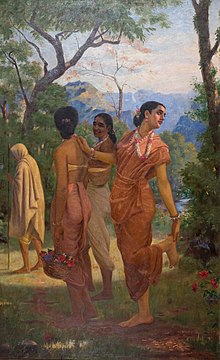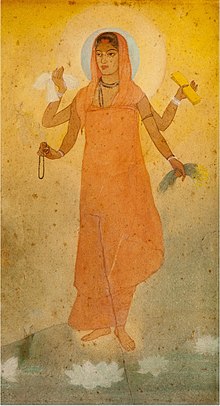

The modern Indian art movement in Indian painting is considered to have begun in Calcutta in the late nineteenth century. The old traditions of painting had more or less died out in Bengal and new schools of art were started by the British.[1] Initially, protagonists of Indian art such as Raja Ravi Varma drew on Western traditions and techniques including oil paint and easel painting. A reaction to the Western influence led to a revival in primitivism, called as the Bengal school of art, which drew from the rich cultural heritage of India. It was succeeded by the Santiniketan school, led by Rabindranath Tagore's harking back to idyllic rural folk and rural life. Despite its country-wide influence in the early years, the importance of the school declined by the 'forties' and now it is as good as dead.
- ^ Bhattacharya, Sunil Kumar (1 January 1994). "2. Revivalism and the Impact of the West". Trends in modern Indian art. M.D. Publications Pvt. Ltd. pp. 7–11. ISBN 978-81-85880-21-1. Retrieved 14 December 2011.